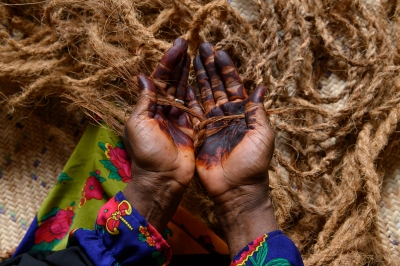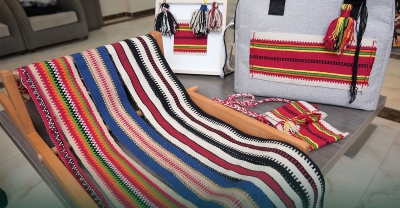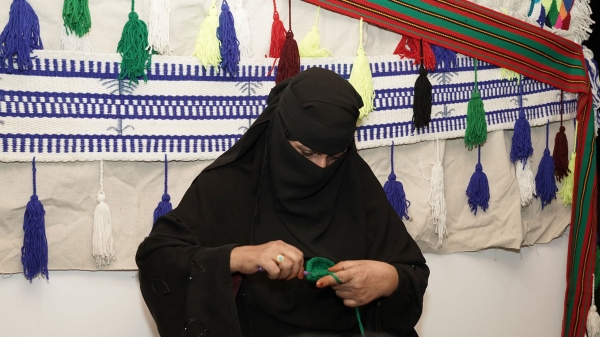
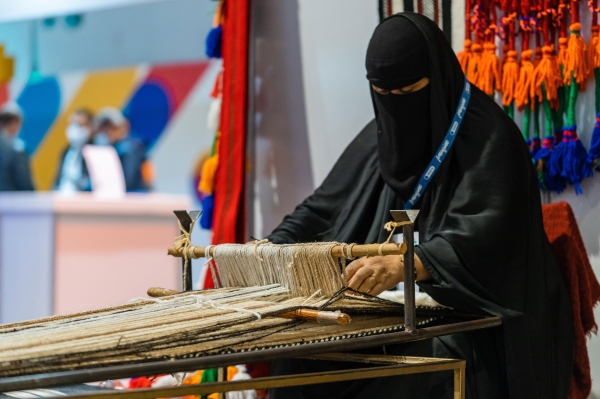
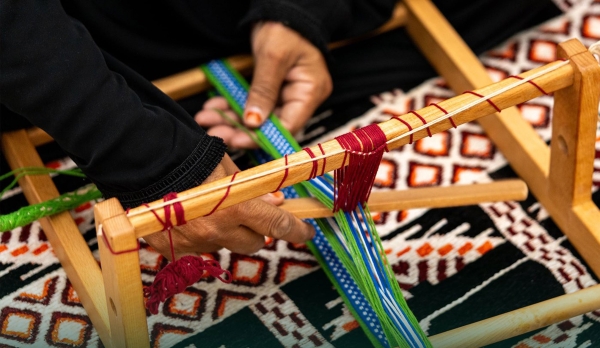
Weaving is one of the traditional crafts in the Kingdom of Saudi Arabia, mostly practiced by women. It relies on the intricate handcraft of arranging threads side by side, then weaving them and decorating them with vibrant patterns. The raw materials for weaving are typically sourced from sheep wool, goat hair, camel hair, and sometimes cotton.
Types of weaving and its tools
There are different types of weaving, including al-Sadu weaving and spinning weaving, each using distinct tools. For example, spinning weaving uses tools such as al-Mighzal (spindle), a smooth rod about twenty-five cm long, and al-Mitraq (mallet), a long, flexible stick used for beating wool to clean it. For al-Sadu weaving, tools such as wooden posts placed in the front, back, and center, with wool threads spread across them, are used. The peg helps stabilize the posts, and al-Bayin (thread holder) is used to assist in holding the threads together.
Al-Sadu weaving on the UNESCO List
Al-Sadu weaving is the eighth cultural element on the United Nations Educational, Scientific, and Cultural Organization (UNESCO) List of Intangible Cultural Heritage in Saudi Arabia. It was inscribed on the list in 2020. Al-Sadu weaving was also featured in the design of the Group of Twenty (G20) Summit logo, which Saudi Arabia hosted in the same year. Weaving is present at heritage festivals held across various regions of Saudi Arabia, including Souq Okaz Festival in Taif Governorate and the International Falcons and Hunting Exhibition in the capital, Riyadh.
Weaving products in Saudi regions
Weaving products were used to serve people in all aspects of their lives and were typically used for household and personal purposes. The time required to create these products varies depending on the specific item. Garments such as Abaya and Bisht typically take two to four days to make, while other products may require more time.
Historically, weaving played a significant role in producing furnishings and ship sails in the eastern part of Saudi Arabia. It was also used to create Abaya and Bisht. In the central regions of Saudi Arabia, carpets and al-Mazawid (sacks) were made to hold utensils and supplies for travelers.
In the northern part of Saudi Arabia, weaving produced carpets, bedspreads, and household storage bags. In the western and southern provinces, knitted items were used for home furnishings, as well as for making horse and camel saddles, in addition to clothing, covering and heating items, tablecloths, bags, turbans and shawls, grain storage bags, saddlebags, ropes, camel shawls, and muzzles. Bedouin tents and their accessories were hand-woven as local products throughout most of Saudi Arabia's deserts.
Related quizzes
Related articles

